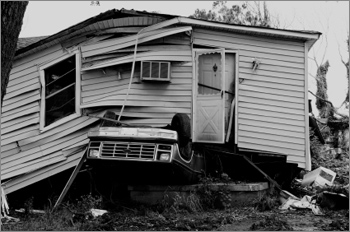How Much Do Weather-related Disasters Cost?
Climate scientists predict many weather-related extreme events may be changing in frequency or intensity as the climate warms, or their location, timing, and duration may be changing. The public also perceives a trend toward more extreme events which they pin on climate change: a 2012 poll of U.S. residents by researchers at Yale found that, […]
Pipeline Safety and Keystone XL
The Premier of Alberta is in town promoting the Keystone XL pipeline. She fielded questions at the Brookings Institution, and regarding a question referring to last month’s spill in Arkansas said “these are very isolated incidents, and they don’t happen as often as people might suggest that they could.” There are plenty of data on pipeline spills which […]
Responding to Natural Disasters—False Security or Damage Reduction?
Fire, floods, coastal storms, drought—the list of natural disasters that invoke billions in damage to communities and their economies is long and persistent. The tally of costs from Hurricane Sandy in the Northeast continues to mount, mirroring the multi-billion dollar price tags for other hurricane disasters. Yet, year after year, the US Army Corps of […]
Sandy’s Unaccounted-for Costs
Hurricane Sandy and the system it is merging with are predicted to cause substantial damage across the mid-Atlantic. Damages from climate-related disasters, like this one, are on the rise, both within the US and worldwide. This is due in large part to more people, and therefore more buildings, locating in risky areas. It is also […]
Scientists Sentenced to 6 Years in Prison for “Optimizing” Uncertainty of L’Aquila Earthquake
A truism in risk management is that every disaster was predicted by someone, sometime, somehow. The 6 April 2009 earthquake that devastated the Italian city of L’Aquila was “predicted” (actually retrodicted: evidence was adduced post hoc) by anomalous toad behavior 70 km away. An earthquake in the Abruzzo region was also predicted by heretic scientist […]
Keeping the Lights on for 670 Million
On July 30th, the northern grid of the Indian electricity network collapsed, causing electricity outages affecting 8 different states. As power was being restored on the 31st, the grid collapsed again. This time along with the northern grid, the eastern and north-eastern grids also collapsed affecting an area populated by an estimated 670 million people. […]
Firefighting is a Subsidy
RFF’s Carolyn Kousky at the NYT’s Room for Debate on “Does the Government Cause or Prevent Wildfires?“: … federal fire suppression efforts can act as a subsidy for development, increasing the amount of land conversion in fire-prone areas. Communities have little incentive to restrain growth, but there may be high-risk areas where the costs of development to […]
NFIP Reform Passes

After years of discussion, Congress finally passed some important reform measures for the troubled National Flood Insurance Program (NFIP). The NFIP is a federal program that makes flood insurance available in participating communities. Today, there are over 5.5 million NFIP policies nationwide representing over $1.2 trillion in coverage. The NFIP is currently struggling under a […]
RFF Policy Commentary: How Generous Is Post-flood Disaster Aid?
Do people have unreasonable expectations about federal aid when disaster strikes? In the latest RFF Policy Commentary, RFF experts Carolyn Kousky and Leonard Shabman look at federal aid after flood events. They hypothesize that property owners may underinvest in insurance, incorrectly believing federal aid will cover their losses. This raises important questions about aid programs, flood insurance, and public […]
The Ins and Outs of the NFIP
If you want to get up to speed on the National Flood Insurance Program (NFIP), it’s hard to do better than RFF’s Carolyn Kousky. You can watch her giving CSPAN viewers the rundown on it here.

 Subscribe; to our RSS Feed
Subscribe; to our RSS Feed Tweets by @RFF_org
Tweets by @RFF_org 
Recent Comments